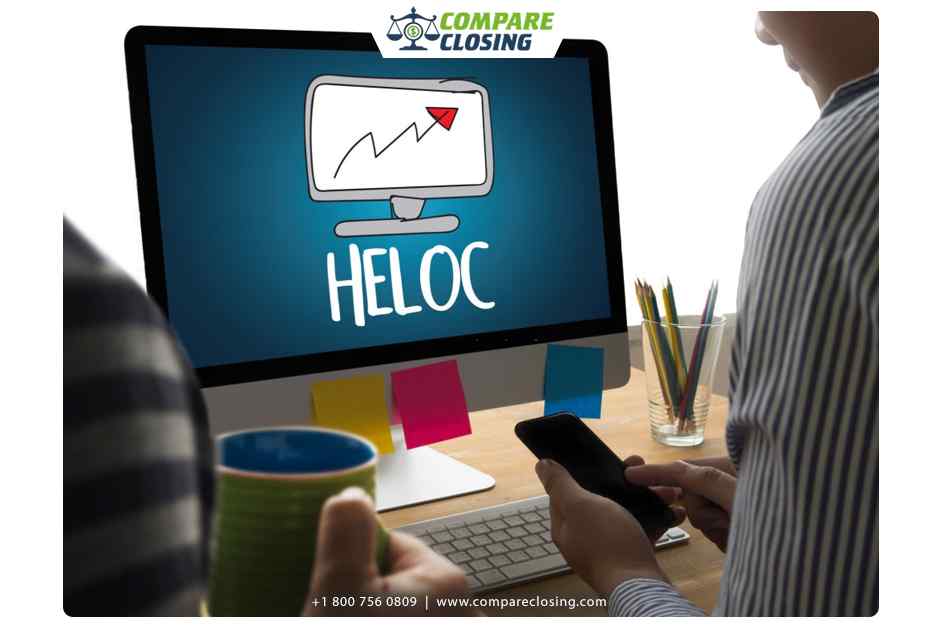Table of Contents
- What Are Netting Escrows & How Does It Work?: The Best Guide - January 2, 2024
- The Secret About Prescriptive Easement: Top Guide 1 Must Know - December 4, 2023
- About Home Equity Loans In Texas And How Can One Obtain It - November 27, 2023
Introduction to Home Equity Loan Vs HELOC
Both Home equity loans and the home equity lines of credit (HELOCs) are loans that are secured with the borrower’s home.
You can take out an equity loan or credit line if you have equity in your home. Equity is the difference between the home’s current market value and what is owed on the mortgage loan.
So if you have paid down your mortgage loan to the point where the value of the home exceeds the outstanding loan balance, then you can borrow a percentage of that difference or equity.
A home equity loan gives you a lump sum upfront to spend, and in return, you make fixed payments over the life of the loan. Home equity loans have a fixed interest rate.
While home equity lines of credit (HELOC) are credit lines, which allows you to tap into a preset credit limit as and when needed. HELOCs have a variable interest rate and their payments are not usually fixed.
The home equity loans and equity lines of credit both allow you to gain access to funds that can be used for any reason, including consolidating debt and making home improvements.
However, there are recognizable differences between home equity loans and equity lines of credit.
Home equity loans and home equity lines of credit are different types of loans depending on your equity in their home. So today we would be looking at home equity loan vs HELOC
While home equity loans come with fixed payments and a fixed interest rate for the term of the loan.
The HELOCs have revolving credit lines with variable interest rates resulting in variable minimum payment amounts.
The draw periods of HELOCs allow you to withdraw funds from your credit lines, as long as you make your interest payments.
More on Home Equity Loan
Based on the equity of your home, a home equity loan is a fixed-term loan that is granted to you by your lender.
A home equity loan is sometimes termed a second mortgage. You can apply for a set amount that you need, and if approved, you receive that amount in a lump sum upfront.
It has a fixed interest rate and schedule of fixed payments for the term of the loan. A home equity loan sometimes is also called a ‘home equity installment loan’ or ‘equity loan’.
What are the Collateral and Terms
The home equity loan is called a second mortgage because the equity in your home is used as collateral and it works like a conventional fixed-rate mortgage.
But you need to have enough equity in your home, which means you need to pay enough of your first mortgage to be qualified to borrow with a home equity loan.
There are several factors, including the combined loan to value ratio or (CLTV) ratio on which the loan amount is decided.
Of the property’s appraised value the loan amount can be 80% to 90%. You having a good credit history would be another factor that goes into the lender’s credit decision.
Lenders may check your credit score, which is a numerical representation of your creditworthiness.
Payments and Interest Rate
The interest rate of a home equity loan is fixed, which means the rate will not change over the years, and the payments are fixed to equal amounts over the life of the loan.
With every payment, a portion goes to interest and the principal amount of the loan. The term of an equity loan could range from 5 to 30 years, however, the lender approves the length of the term.
Whatever is the period, you will have stable, predictable monthly payments for the life of the equity loan.
Pros and cons of Home Equity Loans
A good way to convert the equity you’ve built up in your home into cash is the home equity loan, when you invest that cash in home renovations it would increase the value of your home.
Usually, the interest rates for home equity loans are lower than other credit products, like personal loans and credit cards.
You can pay off the loan early and refinance the loan at a lower rate this is another advantage to a home equity loan.
When you are refinancing you are simply taking out a new loan, which is at a lower interest rate than the existing loan and using this fund to pay off the higher-rate loan.
You can save on the monthly payment and pay off the loan much sooner by refinancing at a lower rate. However, you need to go through the credit approval process again, and possibly pay fees for booking the new loan.
A drawback with home equity loans is that your home could be sold to cover the remaining debt if the loan is not paid off or due to default or nonpayment.
Be sure not to get overextended and borrow more than you can afford to pay back. To satisfy the debt the bank may foreclose or take away your home if the loan goes into default.
And if real estate value decreases, the market value of your house could also go down, and it could lead you to owe more than your home is worth.
If you want to relocate, and if the home value decreases, you could lose money on the sale of the home or be unable to move.
Home Equity Line of Credit (HELOC)
A home equity line of credit (HELOC) is a revolving credit line that allows you to take out money against the credit line up to a preset limit, make payments, and if needed to then take money again.
With a home equity loan, you receive the loan proceeds all at once, whereas a HELOC allows you to tap into the line as and when needed. Until its term ends the line of credit remains open.
As the amount borrowed can change, depending on the credit line’s usage your minimum payments can also change.
Loan Collateral and Terms
Home equity lines of credit are secured by the equity in your home like the equity loan. Because both are revolving credit lines a HELOC has similar characteristics to a credit card.
A HELOC is secured by your house while the credit cards are unsecured. So if you stop paying your payments on the HELOC you could lose your home.
A HELOC has a variable interest rate, where the rate can go up or down over the years. so the possibility of minimum payment increasing as rates rise is high.
There are some lenders who offer a fixed rate of interest for home equity lines of credit. The rate offered by the lender depends on your creditworthiness and the amount you’re borrowing like in a home equity loan.
Draw and Repayment Periods
There are two parts in the HELOC term. One is a draw period, and the second is a repayment period.
In the draw period, you can withdraw funds, which could be for 10 years, and then the repayment period could last for another 20 years, making the HELOC a 30-year loan. You cannot borrow any more money once the draw period ends.
You still have to make payments during the HELOC’s draw period, which are typically interest-only.
So the payments during the draw period are normally small.
But during the repayment period, the payments become substantially higher because the principal amount borrowed would also be included in the payment schedule along with interest.
It’s important to note the conversion from ‘interest only’ payments to ‘principal and interest’ payments can give you a shock, and you ought to budget for those increased monthly payments.
Fors and against of Home Equity Lines of Credit
The maximum you can borrow with a HELOC is the amount of the credit limit. You have the flexibility with HELOCs to borrow as much or as little as you need up to the credit limit.
One drawback with HELOCs is that the interest rate can rise, and because of it so will the pay rise. This unpredictability can make it difficult to determine the overall cost of a HELOC.
If you have borrowed a HELOC, the outstanding amount can be refinanced into a fixed-rate home equity loan.
Then the new loan would be issued by the lender and use the proceeds to pay off the HELOC where the credit line would be closed. Then you would pay back the funds under the home equity loan.
You would obviously need to go through the process of credit approval to change the HELOC balance into a fixed-rate equity loan, and there’s no guarantee of approval.
Major differences between home equity loans vs line of credit
HELOCs can be beneficial as a home improvement loan because they allow you the freedom to borrow as much or as little as you want.
Assuming there’s still available if you need more money, you can get it from your line of credit, without needing to re-apply for another mortgage loan.
If you know exactly how much you need to borrow and how the money will be used then a home equity loan is a good choice. You’re guaranteed a certain amount once approved, which you receive in full.
Home equity loans can help with big expenses like your children’s college fund, repairs, and rebuilding, or debt consolidation. On the contrary, if you aren’t sure how much you’ll need to borrow or when you need it a HELOC is a good choice.
Conclusion
So now you know about home equity loans vs line of credit while selecting or taking a loan always ask yourself – What’s the purpose of the loan? Just because you can borrow against your home’s equity it doesn’t mean you should.
You might want to note that getting a HELOC may be tougher in 2021 because In 2020 Wells Fargo and JPMorgan Chase put a freeze on new HELOCs as a consequence of the coronavirus pandemic.
So there is a possibility of other banks putting a lock on credit in the future.
Amanda Byford
Amanda Byford has bought and sold many houses in the past fifteen years and is actively managing an income property portfolio consisting of multi-family properties. During the buying and selling of these properties, she has gone through several different mortgage loan transactions. This experience and knowledge have helped her develop an avenue to guide consumers to their best available option by comparing lenders through the Compare Closing business.





